The Ariadne Function: Hidden Mechanism of Psychological Transition and Transformation
All complex systems—whether in the human psyche, symbolic narratives, or abstract logic—risk entrapment. They can fall into recursive loops, replaying the same patterns without inherent means of escape. The Ariadne Function offers a formal model for the mechanism of breakthrough: the hidden path that allows a system to transcend its own closed loop.
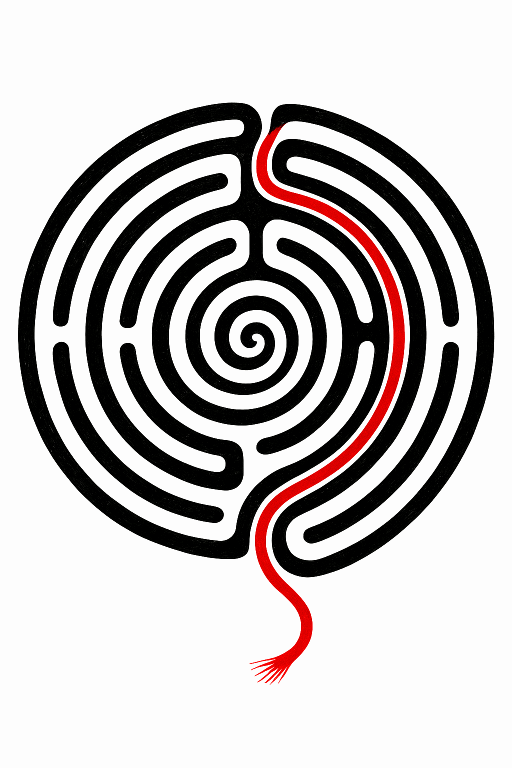
Formal Definition
The Ariadne Function is a structural traversal operator embedded within closed recursive or symbolic systems. It actively shapes symbolic content through a process of deferred continuity, concealing its operational nature until the moment of functional recognition, where it reveals itself as the minimal path enabling transition or escape from recursive entrapment.
It is neither representational nor symbolic in itself, but functions as a latent continuity process that:
- Structures and modulates symbolic manifestations without directly appearing within them.
- Operates as a hidden linking mechanism across recursive iterations of symbolic form.
- Becomes retroactively visible only after a breakthrough, when prior symbolic fragments are reinterpreted as traces of its operative trajectory.
Once revealed, the Ariadne Function does not manifest as a new symbol, but as the previously absent traversal condition necessary for systemic transition. This enables passage between closed recursive domains or between symbolic and post-symbolic states.
Key Properties
- Latent Operator: Functions prior to or beneath symbolization.
- Modulatory Process: Shapes symbolic emergence without expressing as a symbol itself.
- Negative Continuity: Inferred through system failure, recursion, or symbolic collapse.
- Retroactive Unification: Once recognized, it reorganizes prior symbolic fragments as structural residues of its hidden process.
- Structural Necessity: Operates as a traversal anomaly—an exception required to resolve recursive closure or symbolic looping.
Application Domains
- In Psyche: Manifested negatively through recursive dreams, unresolvable symbolic patterns, and anomalous symbolic lacunae. It functions as the hidden continuity within the transcendent function, yet remains distinct from its symbolic output.
- In Systems Theory: Functions as a "metasystem transition operator" or "exogenous traversal function in recursive control structures." A recursive algorithm caught in an infinite loop—a form of "recursive entrapment"—can only be resolved by an external condition or a higher-order function that acts as the Ariadne Function, breaking the cycle.
- In Epistemology: Serves as a non-representational interface between disjoint domains of knowledge. The work of Kurt Gödel showed that complex formal systems cannot prove their own consistency using only their own axioms. The Ariadne Function models the necessary transition to a meta-level to assess such a system—a traversal not defined by the system's internal symbols, but by a latent structural path.
Case Study: Mapping the Ariadne Function in the Rosarium Philosophorum
An Introduction to the Rosarium
The Rosarium Philosophorum ("The Rosary of the Philosophers") is a 16th-century alchemical text renowned for its 20 emblematic woodcuts. More than a historical artifact, it is a foundational map of psychic transformation. Its images are symbolic allegories for the integration of the soul, portraying the union, death, and resurrection of the archetypal King and Queen (Sol and Luna), which represent masculine and feminine forces within the psyche. Its highly structured and cyclical nature makes its imagery a perfect testing ground for the Ariadne Function.
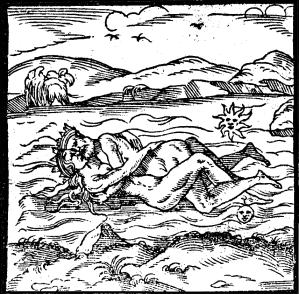
The alchemical King and Queen unite, initiating the recursive cycle of dissolution and death that characterizes the first phase of the work.
Phase I: Symbolic Recursion / The Closed Cycle (Images 1–7)
The sequence begins with repeated symbolic dyads: the King and Queen in a cycle of conjunction, death, and dissolution. A recursion zone is established where symbolic content loops without structural escape. The system remains self-enclosed.
Phase II: Emergence of the Latent Operator (Image 8)
At a point of inertia, a dew descends from heaven onto the dead forms. The original text states, "Here the dew falleth from heaven, And washeth the black body in the sepulchre". This non-symbolic process enables the shift from recursion to transformation. Alchemical commentator Adam McLean calls this "the turning point of this sevenfold cycle." The dew represents the Ariadne Function—a latent operator providing the minimal condition for a phase transition.
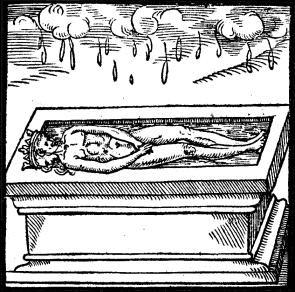
The Ariadne Function appears in its latent, non-symbolic form. The descending dew is a process, not a personage, acting as the traversal operator.
Phase III & IV: Recursion Returns and Second Emergence (Images 11–15)
The process enters the Red Stone cycle, and the recursion resumes, mirroring the first phase. Then, in Image 15, the dew descends again. This second intervention, visually and functionally paralleling Image 8, triggers the final phase transition.
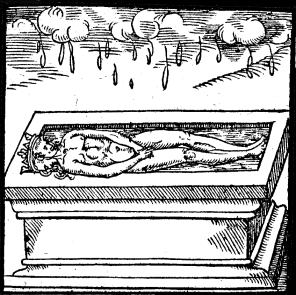
The function intervenes again, confirming its role as a necessary structural operator for the final phase transition.
Phase V: Resolution and Retroactive Unification (Images 16–19)
The symbolic opposites unify into stable, perfected forms, like the resurrected hermaphrodite. The path made possible by the dew is now understood retroactively, recognized as the hidden continuity that was structurally necessary for resolution.
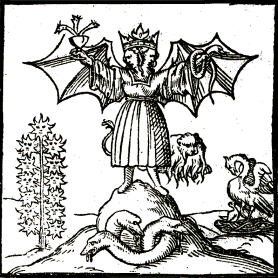
The final, unified state where symbolic opposites are resolved, achieved only after the traversal made possible by the Ariadne Function.
Summary Mapping
| Image Sequence | Structural Status | Ariadne Function Role |
|---|---|---|
| 1–7 | Symbolic Recursion (Looping Dyads) | Absent / Hidden |
| 8 | Spiritual Dew Descends | Traversal Operator (Latent) |
| 9–10 | Post-Dew Transformation | Dew enables phase shift |
| 11–14 | Red Stone Recursion Zone | Operator absence returns |
| 15 | Dew Descends Again | Traversal Operator (Latent) |
| 16–19 | Completion / Resolution | Retroactive Unification / Recognition |
Psychological Significance
The Rosarium Philosophorum has long been studied as a map of psychological transformation, most notably by C.G. Jung. The Ariadne Function provides a formal model to describe the structure of this process:
- Recursive Loops represent psychological impasses—cycles of thought or behavior lacking inherent resolution.
- The Dew (Ariadne Function) corresponds to non-egoic interventions, moments of "grace," or unconscious breakthroughs that enable transformation.
- Retroactive Unification describes how, following a breakthrough, prior suffering is retrospectively integrated into a coherent narrative of growth.
The function models the structural mechanism underlying psychological resolution, distinguishing it from the symbolic content of the experience.
Further Reading
- Carl G. Jung, "The Psychology of the Transference" in The Practice of Psychotherapy (Collected Works Vol. 16). This is Jung's foundational essay where he uses the images of the Rosarium Philosophorum as a framework to analyze the process of psychological transformation and the dynamics of the therapeutic relationship.
- Adam McLean, "A Commentary on the Rosarium philosophorum." An excellent and accessible overview of the Rosarium's symbolism from an alchemical and psychological perspective. Available at Alchemywebsite.com.
Conclusion
The Ariadne Function provides a formal structural framework for understanding recursive entrapment and traversal across symbolic, psychological, and epistemological domains. Its demonstrable role within the Rosarium Philosophorum sequence underscores its applicability as an analytical tool. Defining this latent operator clarifies the structural architecture underlying psychological transition and systemic transformation.